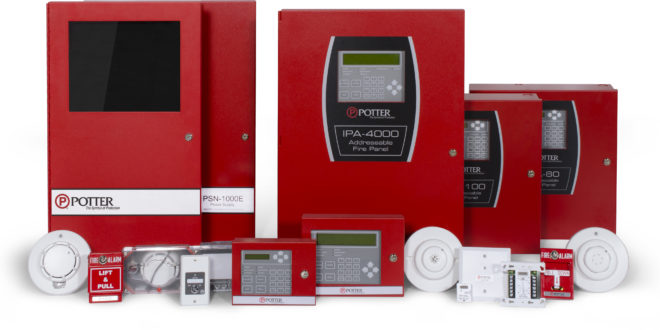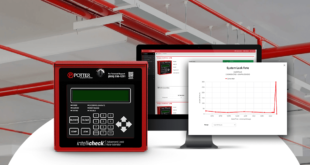
Jumping Into the Fire?
Considerations Before Entering the Fire Alarm Systems Market
More and more fire sprinkler contractors are looking to the fire alarm systems market to add a new stream of revenue to their businesses as well as to help differentiate their service capabilities from that of their competitors. It seems logical, doesn’t it? A fire sprinkler contractor is in the fire protection business and fire alarm systems help protect lives and property from fire. Although there are many fire sprinkler contractors who have successfully added fire alarm systems to their portfolio of products and services, there are just as many, if not more, who have struggled or even failed at doing so. This article will look at a few of the key decisions and strategies to help improve your chances of success in the fire alarm systems market.
Company Structure Aside from the obvious pipe versus wire and water versus electricity, there are many other differences between fire alarm and fire sprinkler systems that make it difficult to operate as a common business unit. Codes, permitting, design standards, and licensing are just a few of these differences that typically require contractors to create a separate team or division that focuses on fire alarm sales, installation, and service. Although it would be ideal to cross train or hire technical staff that could do both sprinkler and alarm work, it is difficult to manage and time-consuming to accomplish.
One common strategy sprinkler contractors use when creating a fire alarm division is to hire a single technical person who is licensed and capable of installing and servicing fire alarm systems. In this walk-before-you-run approach, this person is also responsible for the estimating and sales functions. While this may seem like a great way to get the ball rolling without taking too big of a financial risk, in many cases it is setting the fire alarm division up for failure. In this scenario, a cycle is created where initially this person spends a great deal of time and effort generating sales but as soon as they are awarded a project, they take off their sales hat and put on their technician/project manager hat to get the system designed, approved, and installed.
The time spent on the deliverables is time taken away from selling the next project. Once the system has been turned over to the end user, the sales process starts all over again. This cyclical process makes it very difficult to generate momentum to grow a fire alarm division. In addition, you have all of your eggs in one basket if this person ever leaves the company. As an alternative, you should consider having at least a team of two with a dedicated sales/estimator as well as a dedicated project manager/technician. One other consideration you will want to look into is who will be doing your fire alarm submittal and as-built drawings. If you already have a CAD operator, it may be as simple as having your estimator or project manager work with them for device placement and wiring requirements. If not, you will need to hire one or subcontract out your drawings to a fire alarm design firm. Most fire alarm manufacturers can refer you to a competent design professional in your area.
Sales Strategy To better understand the options you have available to sell fire alarm systems, I like to break the market down into three segments:
• New construction/bid market
• Negotiated/turnkey
• Service and upgrades (MAC)
You may choose to participate in any or all of these segments based on your risk tolerance, technical capabilities, and company goals.
New Construction/Bid Market The new construction/ bid market is the most familiar to fire sprinkler contractors. Although it might seem like the easiest place to start, it is by far the most competitive, carries the most risk, and, in most cases, is the least profitable. The bid market is extremely price sensitive and in many cases, the contractor who missed something during the estimating process is the one who ends up being awarded the job. At that point, your already slim profit margin starts to erode before you even set foot on site and your hopes change from making some profit to just breaking even.
There are ways to mitigate some of the risk. One sales strategy that significantly reduces the chance of labor overages is to sell the system as “parts and smarts.” Using this strategy the fire alarm contractor will do the design, drawings, and submittal, as well as supply the equipment to the electrical contractor to wire and install. Final wiring terminations, programming, and testing are performed by the fire alarm contractor. By selling a system in this manner, the fire alarm contractor reduces the risk of a labor overage by being responsible for a much smaller percentage of labor required to install the system. A side benefit to this strategy is that you can typically have more projects in progress at the same time.
On projects where your profit margin is eroded due to labor overages or mistakenly under bidding the system, all is not lost. Be sure you get in touch with the owner to obtain the required central station monitoring, as well as their annual test and inspection work. Not only will monitoring and testing offset margin slippage on a project, it will also increase the value of your company.
Negotiated/Turnkey The negotiated systems market are projects that are not put out to public bid. The fire alarm contractor is usually determined by an existing relationship with the general contractor who was chosen by the building owner, or in some cases a direct relationship between the building owner and the fire alarm contractor. The competition for these projects is typically much less and your profit margins are usually higher. Sounds great, right? It can be, especially when dealing directly with the building owner. You will need to prepare for a long sales cycle where you may provide a proposal to them that has to be reviewed and budgeted before being awarded the project. In some cases, this can take several years. Another challenge with this sales strategy is that your sales staff must be more seasoned at relationship development and solution selling as opposed to just providing a bid.
You can sometimes differentiate yourself and win negotiated projects by leveraging services that your fire alarm manufacturer provides. One example of this would be the equipment warranty which can vary by manufacturer from one to five years, with three years being the norm. Aligning yourself with a manufacturer that offers a five-year warranty such as Potter Electric Signal, allows you to also extend a five-year equipment warranty to the building owner with no risk on your part. One way to use this longer warranty to your advantage is to provide a one-year labor warranty, but provide the five-year equipment warranty to the building owner. Your installed system price to the building owner may be close or even higher to that of your competitor, but if you are providing two additional years of equipment coverage over what your competition is providing, more times than not, you are going to win that job.
Service & MAC The service segment of the fire alarm systems market includes the required annual testing, periodic repairs to the system, and MAC (moves, adds, and changes). Service/MAC is often the most profitable segment of the market with the least amount of risk. The market opportunity is basically any building that has an existing fire alarm in it, in the geographical area you cover. Some fire alarm contractors even hire dedicated service sales people to seek out this work.
One key element to this that you will want to consider is to make sure you are hiring technicians who are not afraid to work on all fire alarm system brands rather than just the brand your company installs. Because all fire alarm equipment must meet certain industry standards such as UL 864, Standard for Control Units and Accessories for Fire Alarm Systems, it is not as intimidating as it may sound to learn how to do the maintenance and testing on any system they may be unfamiliar with. Minor repairs such as device replacement are also not difficult to accomplish.
One other advantage of focusing on service work is the revenue generated from MAC. It is not uncommon for a building owner to make small changes to their facility throughout the year that necessitates moving, adding, or changing out some fire alarm equipment. In many cases, the building owner is not even aware that the new wall they installed is going to require an additional smoke detector and the relocation of the strobe that is now behind it. When you catch this as a deficiency on your annual inspection, the building owner will likely ask you to make the changes. Many fire alarm service contractors develop relationships with other contractors in their area to source the equipment needed for repairs to a system or when performing MAC. In addition, there are a growing number of online storefronts that specialize in selling replacement parts for most of the major manufacturers’ brands.
The easiest way to generate service and MAC work is to make sure you sell the building owner a service agreement for all of the systems you install. This is sometimes easier said than done, especially on publicly bid projects where the building owner may be unknown to you until they are ready to take ownership of the building and may already have a relationship with another fire alarm service company.
There are numerous strategies that can be used to help you be more successful in selling service agreements, for example, packaging multiple services together such as sprinkler, back flow, portable extinguishers, and fire alarm into one agreement. The more services you package, the easier it becomes for the building owner who has less service providers to deal with. It also makes it harder for your competitors to provide an apples-to-apples service proposal. If your company is unable to provide some of these services, you may find success and even some reciprocal business from another contractor in your area that you can partner with.
These are just a few of the decisions and considerations that must be made when making the jump into the fire alarm market. Rest assured that there are many industry resources available to help you along the way including manufacturers, industry associations, training companies, Authorities Having Jurisdiction (AHJs), and more. Hopefully, some of the considerations and strategies in this article will help you jump into the fire with more confidence and an improved chance for success.
ABOUT THE AUTHOR: Craig Summers is vice president of sales, fire & security for Potter Electric Signal. He is NICET Level IV Fire Alarm Systems certified, and has 35 years’ experience in the fire alarm industry on both the manufacturing and contracting ends of the business.

 Sprinkler Age A Publication of the American Fire Sprinkler Association
Sprinkler Age A Publication of the American Fire Sprinkler Association
